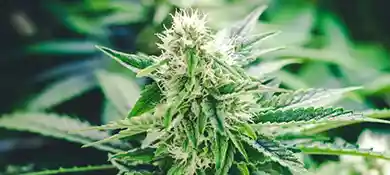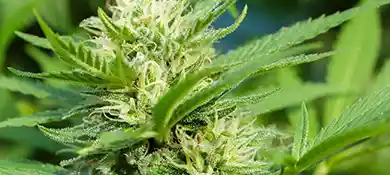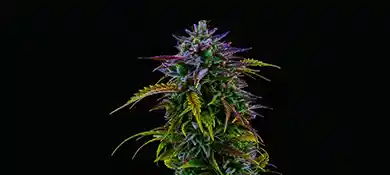How to Read and Use a VPD Chart Effectively
When people first hear the term “Vapor Pressure Deficit (VPD),” it often sounds complicated. But it's really about the delicate balance between temperature, humidity, and plant transpiration. Get this balance right, and your plants thrive; get it wrong, and you'll see wilting leaves, stunted flowering, and lower yields.
So this article skips the theory and gets straight to the practical—how to interpret VPD charts, analyze the data, and use it to optimize your cannabis growing environment.
The Complete Guide to VPD Charts: Master Your Grow Environment for Higher Yields
When people first hear the term “Vapor Pressure Deficit (VPD),” it often sounds complicated. But it's really about the delicate balance between temperature, humidity, and plant transpiration. Get this balance right, and your plants thrive; get it wrong, and you'll see wilting leaves, stunted flowering, and lower yields.
So this article skips the theory and gets straight to the practical—how to interpret VPD charts, analyze the data, and use it to optimize your cannabis growing environment.
What is a VPD Chart, and Why is it So Important?
VPD (Vapor Pressure Deficit) may sound like a scientific term, but it's simply a measure of how “dry” or “wet” the air feels. Simply put, it reflects the air's ability to “draw water” from plants.
When VPD is too high, the air is too dry, causing plants to transpire excessively and become dehydrated.
When VPD is too low, the air is too humid, reducing plant transpiration and hindering nutrient uptake.
Thus, VPD acts as a “balance gauge” for temperature and humidity. VPD charts are tools that let you instantly see if this balance falls within a reasonable range.
Different Types of VPD Charts
VPD charts come in various forms. Depending on your focus, several common types exist.
Recommended Grow Room VPD Chart
This is the most basic and widely used type.
It prioritizes air temperature and humidity, indicating the optimal range for different growth stages.
For example, the charts commonly found on the ScynceLED blog are representative of this type—very beginner-friendly.
Ideal Leaf VPD Chart
Leaf charts are more “precise.” They factor in leaf temperature, as leaf surfaces are often several degrees cooler than the air.
This type of chart more accurately reflects plant transpiration status. Dimlux's blog features numerous examples to help you understand your plants' actual conditions more precisely.
Dynamic VPD Charts
If you seek real-time monitoring, try dynamic charts.
Tools like vpdchart.com let you input data such as temperature, humidity, and leaf temperature, instantly calculating the current VPD value.
The advantage of these charts is immediate feedback. As conditions change, you know exactly what to adjust.
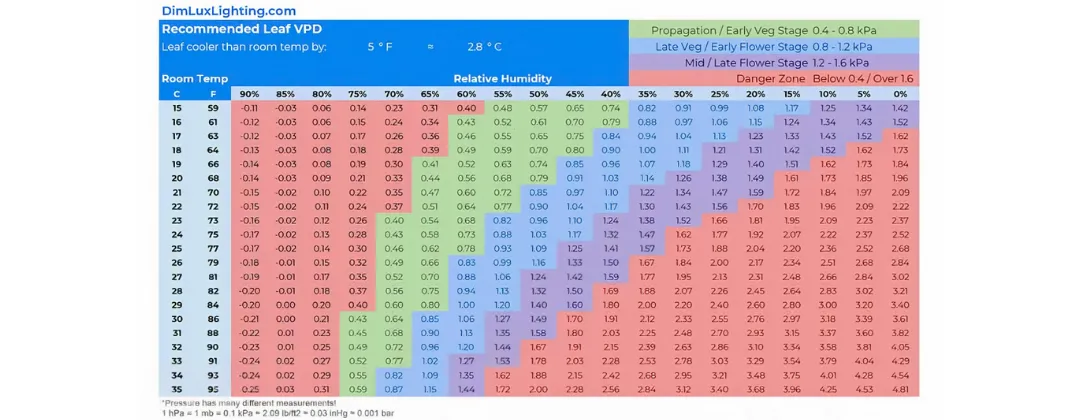
How to Read VPD Charts
Don't be intimidated by the curves—VPD charts are actually quite intuitive:
X-axis: Relative Humidity (RH)
Y-axis: Air Temperature (°C or °F) Some charts include an additional reference line for leaf temperature, enhancing reading accuracy.
Understanding the relationship between these three data points reveals whether conditions are too wet, too dry, or just right.
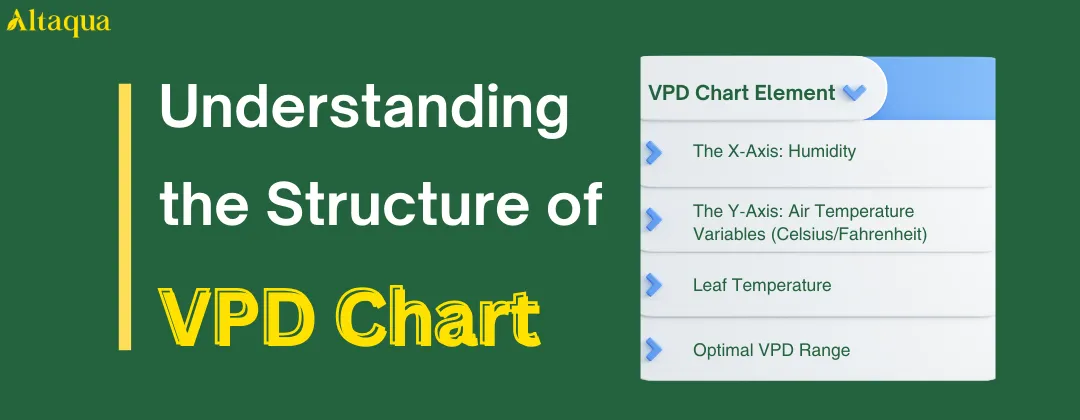
Ideal VPD Ranges for Different Cannabis Growth Stages
VPD charts typically use color-coded zones to indicate the “comfort zone” for each stage.
Seedling/Propagation Stage (Dark Green)
Ideal VPD: 0.4 – 0.8 kPa
Environmental Characteristics: High humidity, moderate temperature—helps seedlings retain moisture and establish roots.
Vegetative Growth / Early Flowering (Light Green)
Ideal VPD: 0.8 – 1.2 kPa
Environmental Characteristics: Enhanced transpiration promotes nutrient transport, building plant vigor and preparing for flowering.
Mid-to-Late Flowering Stage (Yellow)
Ideal VPD: 1.2 – 1.6 kPa
Environmental Characteristics: Slightly lower humidity aids in compact bud formation and reduces mold risk.
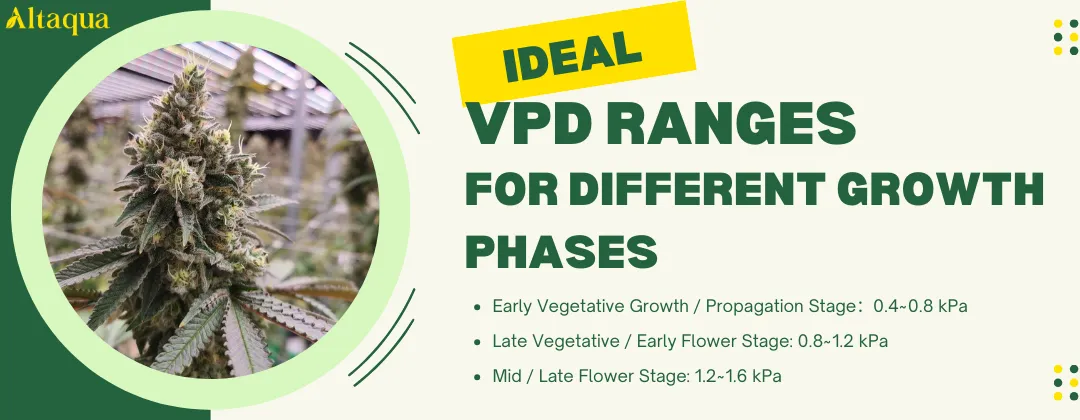
VPD Chart Hazard Zones
Beyond indicating “optimal ranges,” the VPD chart highlights “hazard zones”:
Gray Zone (Disease Risk): Excessive humidity and leaf condensation promote powdery mildew and gray mold.
Blue Zone (Insufficient Transpiration): Excessive humidity with VPD below 0.4 kPa impairs plant respiration and slows nutrient uptake.
Red Zone (Excessive Transpiration): Excessively dry air with VPD above 1.6 kPa causes leaf dehydration, curling, or scorching.
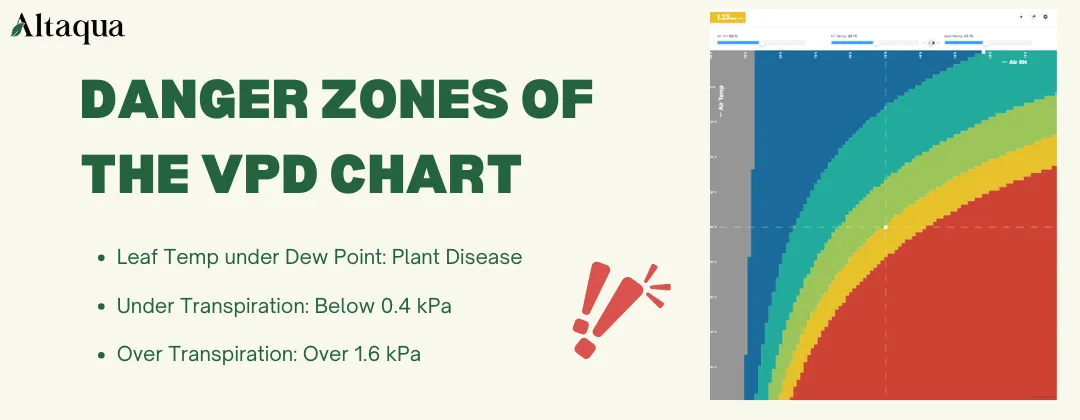
Practical Application: Real-World Use of VPD Charts
Static VPD Chart (Using Dimlux as Example)
Air Temperature: 25°C
Relative Humidity: 50%
Leaf Temperature: 23°C → Calculated VPD value approx. 1.47 kPa, falling precisely within the optimal range for flowering.
Dynamic VPD Chart (vpdchart.com)
Temperature 28°C, Humidity 50%, Leaf Temp 26°C → VPD value remains 1.47 kPa but approaches the upper limit, requiring vigilance for dehydration risks.
Customized VPD Chart (PulseGrow)
PulseGrow's chart adjusts calculations based on leaf temperature, better reflecting real-world conditions. For example:
Temperature 27°C, Humidity 55%, Leaf Temp 26°C → Yields 1.3 kPa, firmly within the ideal flowering range.
Challenges in Applying VPD Charts to Commercial Cultivation
While VPD seems straightforward, large-scale commercial farms present multiple issues:
Uneven airflow and light distribution across zones, where static charts fail to reflect microclimate variations;
Varied humidity requirements across cultivars, making a single chart insufficient;
Widespread neglect of leaf temperature impacts;
Difficulties integrating automation systems seamlessly with VPD charts, leading to excessive manual adjustments and high error rates.
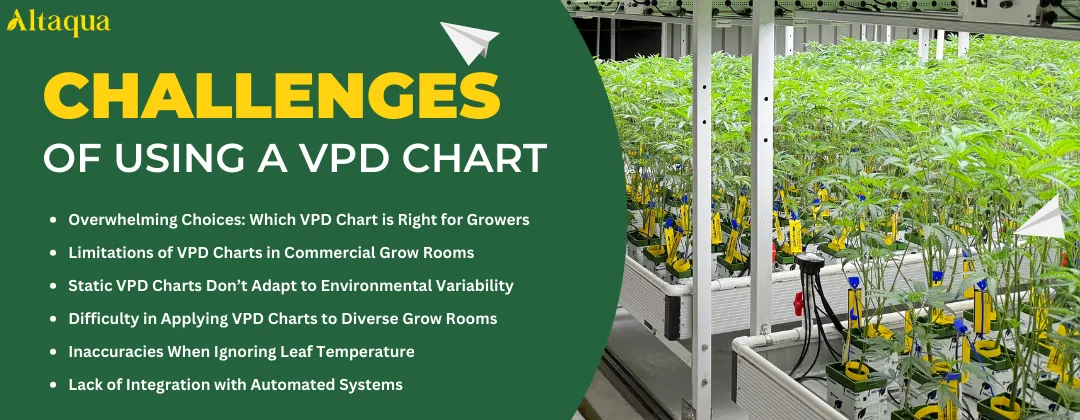
Technology Simplifies VPD Management
The good news is these challenges are being progressively addressed by new technologies.
Dynamic Customizable Charts
Platforms like VPDChart.com respond in real-time to environmental shifts, helping growers tailor charts that precisely match their specific conditions.
Mobile Monitoring & Cloud Management
Systems like Pulse Grow monitor temperature, humidity, CO₂ levels, and more via sensors in real time. Check VPD status directly through a mobile app. Alarms trigger instantly upon exceeding thresholds, enabling immediate action.
Smart HVAC Systems
Take Altaqua's grow room HVAC system, for example. Paired with Siemens control panels, it automatically adjusts temperature and humidity to maintain VPD within ideal ranges.
The system supports WiFi remote viewing, allowing you to monitor environmental changes anytime, even when you're not on-site.
Automated control not only reduces manual intervention but also prevents human error, making the entire cultivation process more efficient and stable.
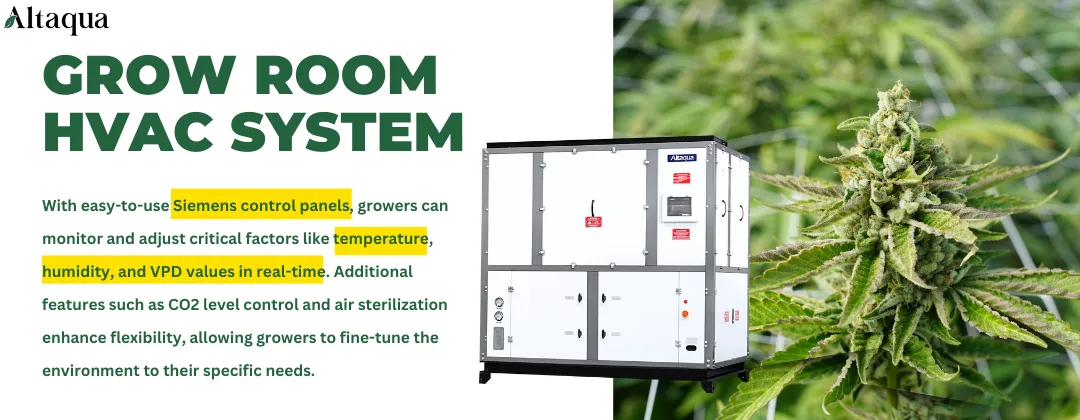
Conclusion: VPD Isn't Just a Number—It's the Language of Plants
VPD charts aren't dry data; they're actually telling you—is your plant “too hot” or “too thirsty” right now?
Mastering its interpretation allows you to understand the plant's language, anticipate issues proactively, and maximize both yield and quality.
Today, with technologies like dynamic charts, mobile monitoring, and intelligent HVAC systems, growers can achieve near-automatic environmental management for plants. This is the essence of modern cannabis cultivation.
Share with your friends:
Popular Blogs on Altaqua:
Download Catalogue


